10 Benefits Of CPR Training For High School Students
300The prevalence of sudden cardiac arrest (SCA) in adolescents and young adults is a significant issue in today’s world. According to the Mayo Clinic, SCA costs the life of one out of 50,000 young athletes annually, and the etiology continues to evolve. SCA implies a person does not realize an underlying cause of cardiac arrest exists. Meanwhile, less than 10 percent of adolescents that suffer SCA survive. However, the introduction of life-saving skills training, such as CPR training, in high schools, can turn this tide, as well as provide students with several key benefits.
1. It Teaches Life-Saving Skills for Use in Any Environment
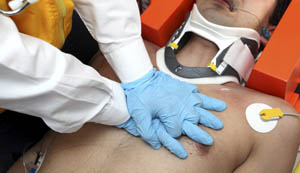 The nature of SCA can provide a false sense of security to high school and college students. Although it routinely occurs during periods of high-intensity exercise, it could strike at any moment. This means SCA could happen in any location, regardless of activity levels. Skills gained in a life-saving course can be used in any environment, and areas where high school students congregate, such as restaurants, classrooms, school facilities, and recreational centers, could become the scene of an emergency.
The nature of SCA can provide a false sense of security to high school and college students. Although it routinely occurs during periods of high-intensity exercise, it could strike at any moment. This means SCA could happen in any location, regardless of activity levels. Skills gained in a life-saving course can be used in any environment, and areas where high school students congregate, such as restaurants, classrooms, school facilities, and recreational centers, could become the scene of an emergency.
Even mundane locations, including shopping centers, have an increased prevalence of SCA occurrence among this age group. Of course, knowing how to perform CPR is applicable for adults of any size and age. Shopping malls have the third-highest rate of cardiac arrest in the U.S., reports My.AmericanHeart.Org. Therefore, the life a student saves may not be a classmate; it could be a total stranger or a family member of a friend.
2. Students Learn How to Respond in Emergencies to Those in Cardiac or Respiratory Distress
 It is easy to assume CPR training only teaches people how to respond and provide life-saving care. Completing the course teaches students about their responsibilities and what they can do to stay safe when responding to emergencies.
It is easy to assume CPR training only teaches people how to respond and provide life-saving care. Completing the course teaches students about their responsibilities and what they can do to stay safe when responding to emergencies.
For example, a core component of modern training programs is checking the scene for safety. After all, getting yourself injured will not help anyone, even if you are trying to provide care.
3. Students Graduate Knowing How to Use an AED—Critical for Entry to Some Professions
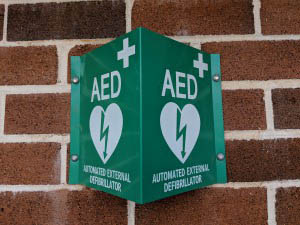 As more companies grow aware of the risk of mortality following cardiac arrest, even when caused by lifestyle factors, CPR Certification will become a prerequisite to employment. Although CPR does provide life-saving support, it is equally important to understand how to apply and use an automated external defibrillator (AED). Certain occupations also mandate such training before ever hiring someone. In other words, health professions and those involved in the direct care of others, such as daycare centers, may not allow anyone without an existing certification to even apply for employment.
As more companies grow aware of the risk of mortality following cardiac arrest, even when caused by lifestyle factors, CPR Certification will become a prerequisite to employment. Although CPR does provide life-saving support, it is equally important to understand how to apply and use an automated external defibrillator (AED). Certain occupations also mandate such training before ever hiring someone. In other words, health professions and those involved in the direct care of others, such as daycare centers, may not allow anyone without an existing certification to even apply for employment.
4. CPR May Reduce Risky Behaviors in Students
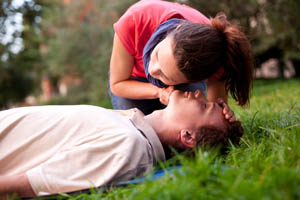 Completing a CPR course in high school offers significant benefits to participants and everyone they encounter. High school is an already tumultuous time, and no one should face the prospect of increased mortality due to a lack of education. Also completing such courses provide life-long skills that carry over among careers, recreational activities, and personal endeavors. More schools should consider implementing CPR program requirements. Those ready to learn the skills needed to provide care to those in distress should enroll in a life-saving skills course and increase awareness for SCA among today’s youth.
Completing a CPR course in high school offers significant benefits to participants and everyone they encounter. High school is an already tumultuous time, and no one should face the prospect of increased mortality due to a lack of education. Also completing such courses provide life-long skills that carry over among careers, recreational activities, and personal endeavors. More schools should consider implementing CPR program requirements. Those ready to learn the skills needed to provide care to those in distress should enroll in a life-saving skills course and increase awareness for SCA among today’s youth.
This information may be useful in reducing participation in risky behaviors among adolescents and college students. Due to the prevalence of such activities among today’s youth, instructors may touch on this risk and encourage high school students to avoid risky behavior. Depending on the institution and program, a review of the signs and symptoms of alcohol poisoning may be included, as well as information about the importance of obtaining professional medical help when such symptoms arise, notes the Centers for Disease Control and Prevention.
5. Skills Carry Forward Into College Settings, Including Programs of Study
Skills gained in completing a life-saving course in high school carry forward into college settings too. Although the risk of SCA resulting from congenital disabilities decreases as students near college graduation, the risk of coronary artery disease begins to climb. Unfortunately, the added stress that accompanies college coursework may lead to poor lifestyle choices, including unhealthy diets, lack of exercise, and extreme stress on the body. Such factors contribute to an increased risk of cardiac arrest, and since time lost, when arrest strikes, is the equivalent to decreased survival, those with the skills and training to respond can effectively increase the survival chances of those in need.
6. It Builds Awareness for Cardiac Illness Screenings
The prevalence of congenital heart problems is a key reason for the higher risk of SCA among today’s youth. In high school populations, more than 85 percent of deaths among those under age 25 are attributable to congenital cardiac pathology, says ACC.Org. It is important to note the risk of mortality from SCA increases as individuals age past 25. This is believed to be the result of acquired coronary artery disease. However, risk factors for this disease increase among those with a predisposition to cardiac health problems. Thus, screenings for congenital disabilities build awareness for future risk of coronary artery disease and catch cases where SCA may occur among high school and college students.
7. CPR Training Is Likely to Become Mandated in All States Within Coming Years
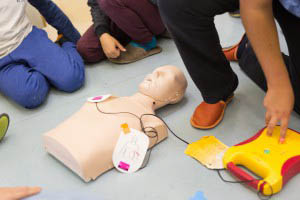 Multiple states have enacted legislation to mandate high school students to complete CPR courses before graduating. However, the vast majority have not implemented such legislation. As explained by USA today, the debate over whether students should be required to complete coursework of this invasive nature will likely continue. This is a similar effect of increased vigilance over what students learn and what they are required to do to graduate. For example, some states allow an exemption, without any justification other than personal beliefs, from requiring students to maintain their vaccines.
Multiple states have enacted legislation to mandate high school students to complete CPR courses before graduating. However, the vast majority have not implemented such legislation. As explained by USA today, the debate over whether students should be required to complete coursework of this invasive nature will likely continue. This is a similar effect of increased vigilance over what students learn and what they are required to do to graduate. For example, some states allow an exemption, without any justification other than personal beliefs, from requiring students to maintain their vaccines.
However, the renewed interest in the debate over vaccines in public health schools will likely translate into an infusion of CPR topics. As a result, more states are likely to mandate CPR training for high school students as a basic graduation requirement.
8. It May Count Toward Graduation Credits or Electives
 In states where CPR classes are not required among high school and college students, another benefit may still exist. Although a CPR class takes little time, often less than a single day to complete, some schools may count it toward graduation credits or elective requirements. Of course, this aspect of the conversation brings up another point; students engaged in work-school programs may be required to obtain their CPR certification for employment in certain occupations. Since the course takes less time to complete than traditional high school classwork, schools may also implement programs that combine multiple life-saving courses into one.
In states where CPR classes are not required among high school and college students, another benefit may still exist. Although a CPR class takes little time, often less than a single day to complete, some schools may count it toward graduation credits or elective requirements. Of course, this aspect of the conversation brings up another point; students engaged in work-school programs may be required to obtain their CPR certification for employment in certain occupations. Since the course takes less time to complete than traditional high school classwork, schools may also implement programs that combine multiple life-saving courses into one.
For example, students may learn how to administer CPR, use an AED, protect themselves against blood-borne pathogens, perform First Aid, and more. The opportunities are endless.
9. Students Completing a CPR Course Begin to Think About Ways to Prepare for Real-World Disasters
Those that complete a CPR class have an advantage in responding to emergencies and preparing for the threat of natural disasters. Over recent years, the prevalence of natural disasters has increased dramatically. Today’s disasters are not just occurring more often; they are occurring with increased severity.
Take the example of Hurricane Harvey. The storm did produce severe damage when it made landfall, but much of the damage resulted from the continuing rain that stalled across much of the Texas coast. Numerous people needed high-water rescues, and many lost their lives. The immediate response when someone is suspected of for the translation in the water is to assess the state of consciousness and basic vital signs, including respiration and checking for a pulse. When someone is neither breathing nor exhibits a pulse, the best course of action is to begin CPR. Of course, preparing for natural disasters through life-saving skills training is not limited to severe weather.
The skills gained from getting a CPR Certification can help students prepare for the threat of natural disasters or emergencies. An emergency can arise out of any situation. Car accidents may occur. A wildfire could lead to respiratory distress, and the risk of another terror attack will always exist. Taking steps to know how to save lives is the cornerstone of effective disaster preparedness. Knowing how to evacuate, creating a First Aid kit, and developing a plan form integral parts of disaster preparedness, knowing what to do to save someone’s life when their heart stops beating or breathing ceases is essential to survival. Therefore, other courses are useful in disaster preparedness, and since the prevalence of natural disasters appears to be increasing, completing a course could mean the difference between overcoming such disasters or lives cut too short.
10. The Life Saved Could Be a Friend, Coworker, Family Member or a Total Stranger
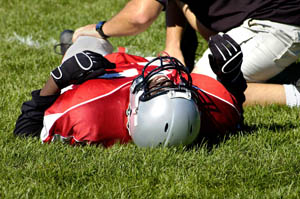 The final benefit of meeting a CPR program in high school is the simplest and the most empowering. High school students face many restrictions in their lives. They may have responsibilities at home, such as chores or watching after siblings, and they spend countless hours socializing with family and friends. The high level of socialization among high school students makes this age group particularly susceptible to witnessing a cardiac arrest. Of course, high school students will always rank family members and friends as the most important people in their lives.
The final benefit of meeting a CPR program in high school is the simplest and the most empowering. High school students face many restrictions in their lives. They may have responsibilities at home, such as chores or watching after siblings, and they spend countless hours socializing with family and friends. The high level of socialization among high school students makes this age group particularly susceptible to witnessing a cardiac arrest. Of course, high school students will always rank family members and friends as the most important people in their lives.
Obtaining the skills necessary to respond when that person suffers from cardiac arrest or respiratory distress could save a life. However, saving the life of a total stranger is one of the greatest feelings on earth. It is a sense of accomplishment, a show of compassion, a willingness to stand up for others, and a commitment to always remember that person. High school students could be the people that save the life of a choking victim in a fast-food restaurant, or they could simply be in the right place at the right time. This is the greatest benefit of completing a CPR class while in high school. It builds leadership qualities in people. It connects high school students with the rest of humanity.
Consider Developing a Program for High-School Training Courses Now
 Completing a CPR course in high school offers significant benefits to participants and everyone they encounter. High school is an already tumultuous time, and no one should face the prospect of increased mortality due to a lack of education. Also completing such courses provide life-long skills that carry over among careers, recreational activities, and personal endeavors. More schools should consider implementing CPR program requirements. Those ready to learn the skills needed to provide care to those in distress should enroll in a life-saving skills course and increase awareness for SCA among today’s youth.
Completing a CPR course in high school offers significant benefits to participants and everyone they encounter. High school is an already tumultuous time, and no one should face the prospect of increased mortality due to a lack of education. Also completing such courses provide life-long skills that carry over among careers, recreational activities, and personal endeavors. More schools should consider implementing CPR program requirements. Those ready to learn the skills needed to provide care to those in distress should enroll in a life-saving skills course and increase awareness for SCA among today’s youth.
Has your school implemented a free or mandated CPR course? Share your thoughts and this article on social media now to help build awareness for SCA in high school and college students. Anyone can become a life-saver, including those that are still in high school or simply spending time with their friends.

